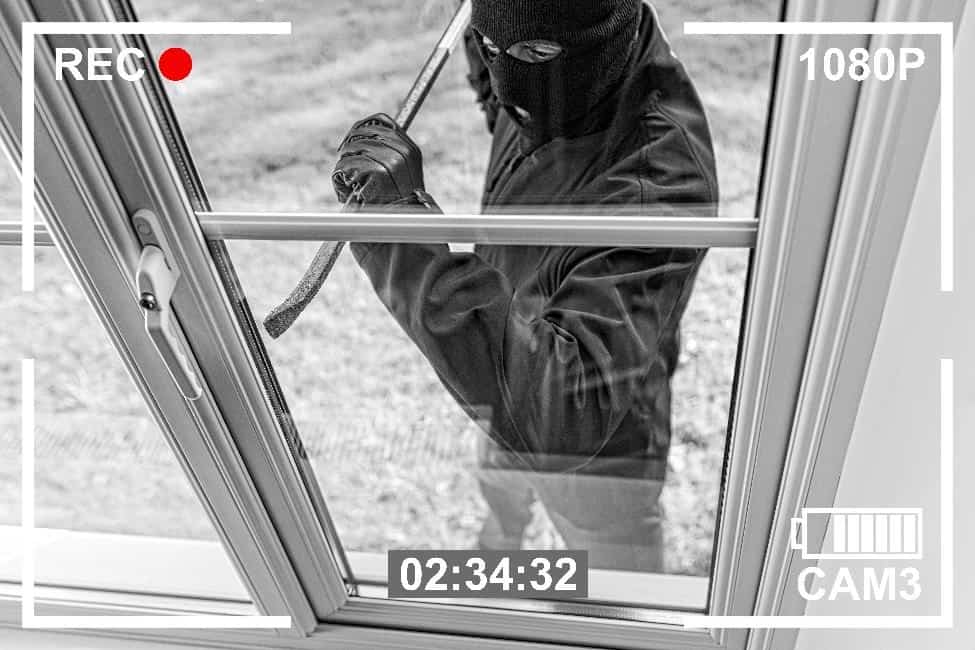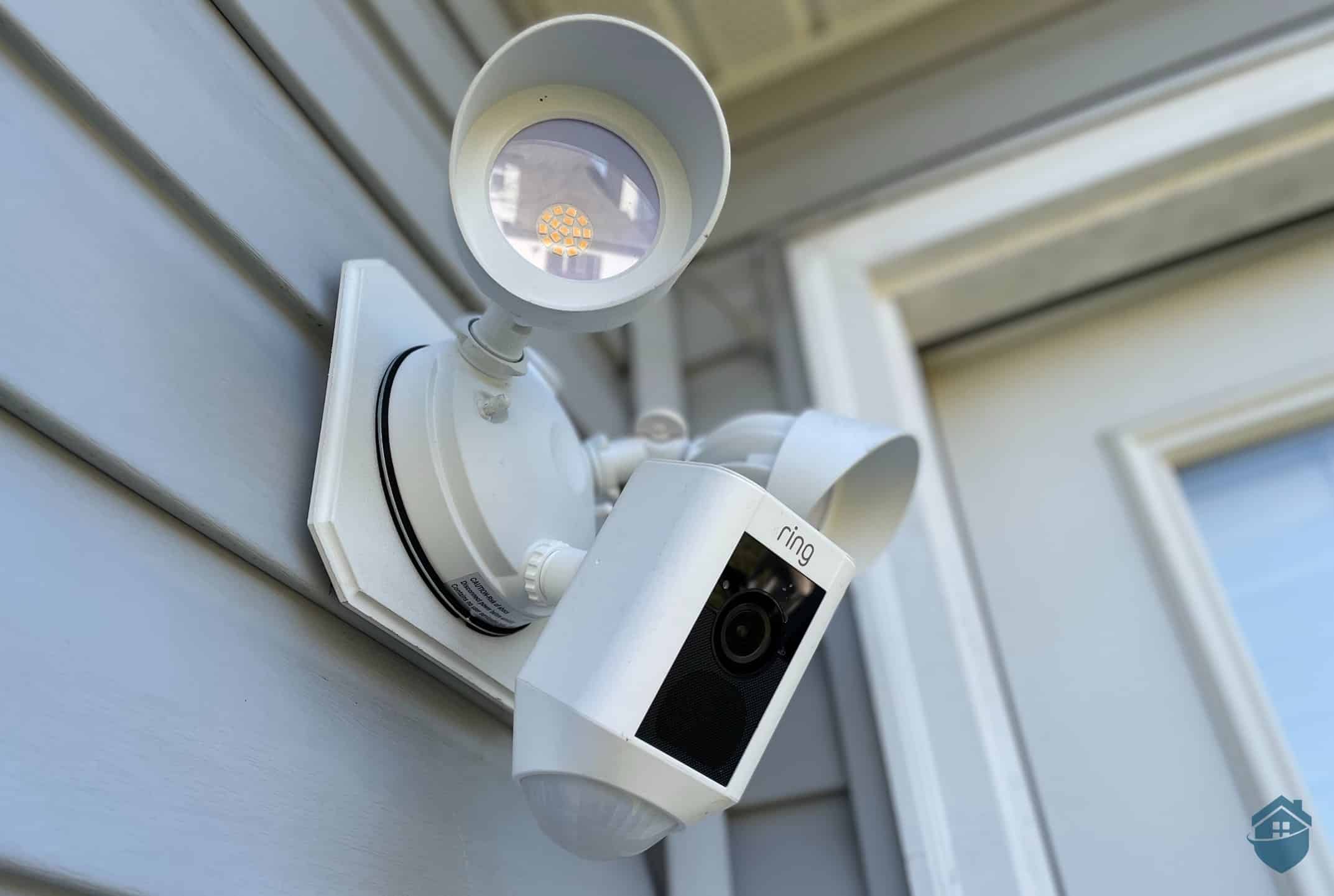
No one wants to be the family on the block with the malfunctioning burglar alarm. You know the one I mean. The folks with the home security system that has a mind of its own, wailing at all hours of the day and night, driving themselves and the rest of the neighbors batty.
No doubt, a siren on the fritz is a supremely frustrating experience — so frustrating you may be tempted to ditch your alarm to make the noise go away, if it ever happens to you. But don’t do it. Quality home security systems do deter wannabe intruders.1 And they don’t really have minds of their own. When your siren starts wailing inexplicably, it’s almost always a technical issue you can fix.
To get you started, here’s a troubleshooting checklist us home security experts put together for households dealing with misbehaving alarms. Below, you’ll also find:
- An overview of the main reasons security alarms go off by themselves
- A breakdown of causes and fixes for randomly firing sirens
Pro Tip: Thieves hate bright lights, so investing in a top outdoor security camera like the Ring Spotlight is a good place to start.
Reasons Your Burglar Alarm Is Going Off Randomly
Home security systems have a thousand moving parts, so rooting out the glitch that’s driving your alarm bonkers can feel a little like finding a needle in a haystack. But it’s rarely a lost cause. It may not even require a visit from a professional. This is good news for anybody that’s installed a DIY home security system like Simplisafe.
Here are the six most common reasons burglar alarms go off randomly:
- You’ve had networking or electrical work done recently
- You’ve got pets (or pests) that are triggering sensors
- One of your sensors is damaged or needs cleaning
- There’s a power issue (batteries included)
- Your windows or doors aren’t shut tight (for window and door sensors)
- Bad installation
That’s obviously a pretty wide range of issues, with fixes of varying degrees of difficulty. If your home security equipment was professionally installed, for instance, you probably don’t want to do too much monkeying under the hood, especially if you’ve got a warranty. However, new equipment isn’t cheap. Neither are visits from technicians. So as long as you don’t go investigating with a sledgehammer, a little DIY diagnosis usually won’t hurt.
FYI: If you have a hardwired home security system, and your siren is going haywire, your alarm may have gotten separated from its power source and drained your auxiliary battery. To stop the alarm from firing until help comes, you may need to deactivate your system entirely.
How does your home measure up when it comes to security? Take this quiz to see how you score, and get recommendations to protect your home.
How to Stop Your Alarm from Firing Randomly
The following checklist will help you rule out the kinds of alarm issues you can handle on your own. If you reach the end of the list, and you’re still no closer to identifying the culprit behind your spazzing siren, it’s probably time to replace your equipment or call an expert.
1. Check the Error Message on Your Hub
Whenever your alarms sounds, your security system records the event. You’ll find those records on your hub or in your app. Read the error message(s). The problem could be as simple as a low or dead battery in one of your sensors, which can trigger burglar and smoke alarms.
Pets could also be the culprit — if your sensors aren’t calibrated properly or don’t have advanced pet detection features. Here are our top picks for pet-friendly security systems.
If it’s an older message, you may need to dig into the alarm memory. Don’t know how? Find the instructions online or in your manual. The error message will show you the zone where the event happened (living room, bedroom, hall, etc.) and the malfunctioning sensor.
Did You Know?Window sensors and door sensors that aren’t aligned properly can also trigger burglar alarms. The same goes for doors and windows that don’t close snugly.
2. Inspect Motion Sensors for Visible Damage
If you’re lucky, something may simply be interfering with your sensor. Built-up dust, for example, or a cobweb. In that case, a damp cloth and duster may be all you need to set your alarm straight.
The issue could also be the sensor lens itself. If the lens is damaged, I’m sorry to say, you’re probably going to need to replace it. Until you do, I’d recommend deactivating that sensor completely.
3. Check for Insects
You’d think the inside of a PIR motion sensor would be the last place a bug would choose to hide, but certain insects do like burrowing into and behind sensors and smoke alarms. Most motion sensors don’t reciprocate those feelings. They hate bugs, especially when they crawl all over their lenses, and respond by sounding the alarm.
There are two kinds of insect infestations: inside and outside. To dislodge creepy crawlies behind or next to your sensor, grab a duster and whisk them out. If they’ve infested the sensor itself, read on.
Pro Tip: If you’ve been plagued by false alarms, you’re not alone. According to law enforcement, only one in 10 alarms signals an actual crime in progress.2
4. Open the Sensor Housing and Look for Damage
Be careful here. Follow the instructions for opening your sensor housing, and use a light touch.
Inside, you’re going to be looking for the same kinds of gunk you looked for outside — dust, debris, cobwebs, etc. If dirt is your problem, you’re in luck. If the wires are fried, on the other hand, or if your sensor lens is damaged, you’ll want to proceed to Step 5.
Warning: Unless you’re an alarm specialist, we don’t recommend trying to repair damaged or burnt-out sensors or wires. A peek behind the housing is better as a diagnosis only. Chances are, if you discover a damaged part, you’ll need to replace the sensor. Thankfully, they only run like $15 to $20 apiece on average.
5. Replace Damaged Equipment and/or Call a Professional
This may not be the news you wanted to hear, but if those wires are kaput, you’re going to need a new sensor. I’d also venture that if you’ve checked your batteries, and cleaned your sensor inside and out, and your alarm is still hitting the high notes like Barry Gibb of the Bee Gees, it’s time for new equipment. Check out our 2025 motion sensor buyer’s guide for some pointers. For DIY systems, motion sensors usually don’t run more than $65 a pop and are usually less.
FYI: Most motion sensors use passive infrared (PIR) detection. When a person or pet walks by, the PIR sensor detects a rapid change in infrared heat, triggering an alert or alarm.
A Roundup of Common Alarm Issues and Their Fixes
Read our troubleshooting guide up top for a deeper look at the following issues. Our general rule of thumb for DIY repairs is: If it’s cosmetic, go for it. If it’s a hardware issue, you’re probably better off biting the bullet and replacing the part or calling in a technician to diagnose.
| Issue | Fix |
|---|---|
| Your batteries are low | Install new batteries |
| Your pet sensors are triggering the alarm | Recalibrate or reposition |
| Your hardwired alarm started misfiring after a recent visit from the electrician | Call an alarm specialist |
| Your sensors are dirty outside | Clean the sensor housing and around the housing |
| Your sensors are dirty inside | Remove the housing and clean inside |
| You see insects in or around your sensors | Use a duster or cloth to remove bugs |
| Your doors or windows move when shut | Tighten hinges and re-check sensor alignment |
Did You Know? According to SimpliSafe, turning your sensor upside down and placing it at least four feet off the ground will eliminate false pet alarms.3 But you may have to experiment to find the sweet spot.
Pet-Friendly Home Security Systems
As any homeowner with a labradoodle knows, our frisky four-legged protectors are great to have around. However, they can pose a problem for security systems that can’t tell the difference between a dog and a thief and trigger a barrage of false alarms. With a little advanced pet detection tech under the hood, however, that problem goes away. These three systems earn top marks in AI-powered pet recognition, and in plenty of other aspects of home safety.
#1 SimpliSafe
SimpliSafe is our top pick for DIY home security in 2025. Monitoring plans are optional and basic equipment costs are at the low end, with cheap entry sensors ($14.99) and affordable motion sensors ($34.99). Pet owners can also set SimpliSafe sensors to ignore big dogs (up to 50 lbs), whereas most systems max out at 40. Read more about our experience with SimpliSafe in our complete SimpliSafe home security review.
#2 Vivint
Vivint hardwired home security systems feature AI-powered pet detection to cut down on false alarms. Vivint is also fully smart home compatible, with optional environmental sensors. Of course, this isn’t a $200 DIY system. Vivint home security starts at $1,200 and requires a professional installation. If that seems like an arm and a leg to pay for home security, just remember there are smartphones that cost more. Here’s our full Vivint review.
#3 Frontpoint
Frontpoint is another affordable security system that’s easy to set up, integrates with smart homes, and features pet detection. Smoke, heat, and flood sensors are available with some plans.
Here’s a breakdown of Frontpoint’s pricing. Or, for our experience testing Frontpoint systems, read our hands-on Frontpoint Security review.
| Frontpoint | SimpliSafe | Vivint | |
|---|---|---|---|
| Price | $130 | $185 | $1,300 |
| Monthly fees | Optional | Optional | $29+ |
| Smart home integration | Yes | Yes | Yes |
| DIY | Yes | Yes | No |
| Environmental sensors (CO, smoke, and water leak) | Yes | Yes | Yes |
FYI: In a 2016 interview from behind bars, notorious career burglar Michael Durden admitted to his police interviewer that he didn’t like wireless home security systems like these because there were no visible wires to cut.4
The Takeaway
We count on our burglar alarms to go off when our home security systems detect danger. And the louder, the better. When they ring for no reason at all, it’s exhausting, and scary. Is that an intruder at the door, or is just my siren telling me the batteries are low? If our alarms cry wolf too many times, we won’t know the difference.
But the fact is, our alarms hardly ever go off randomly. There’s almost always a culprit behind the ear-splitting din. Most of the time, it’s an issue with one of our sensors that we can diagnose ourselves. Fixing it is another story.
The only advice I’d give homeowners with DIY security systems is to hold off on calling a technician. First, locate your misbehaving equipment (via the error message on your hub or app) and see if there’s any cosmetic damage. If anything’s scratched or fried — or you can’t find anything at all — you’re going to spend less money replacing the equipment than paying for a visit from an expert.
FAQs
- Why is my burglar alarm going off randomly?
Burglar alarms misbehave for a number of reasons. Barring any hardware issues (fried wires, damaged sensor lenses, dead batteries, etc.), something is probably interfering with one of your sensors. Use our checklist above to troubleshoot.
- How can I stop my security alarm from going off?
Check the error message on your hub or app. If it’s a sensor issue, locate the problematic sensor and investigate. If your hardwired system has gone haywire, you may need to deactivate it until a technician can take a look.
- Can I fix my home security sensors myself?
You might be able to. See our checklist up top for some tips on how to investigate properly.
- Should I call an alarm specialist to fix my sensors?
Not necessarily. If it’s a DIY system, and cleaning and realigning (for door and window sensors) doesn’t solve the problem, you’ll probably need to replace the sensor. This will be cheaper than calling in a pro to take a look.
- How much do new motion sensors cost?
Motion sensors typically run between $10 and $40 a pop.






